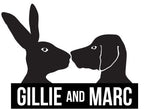Dimensions
Sculpture
74.8 x 196.8 x 78.7 inch (H*L*W) 1984.16lbs
1.8 x 5 x 2m (H*L*W) 900kgs
Base
157.5 x 78.7inch (L*W)
4 x 2m (L* W)
Medium
Bronze
Style
Contemporary Sculpture, Wildlife, Activist Art
Edition Number
/6
Description
This 13-year-old female is very special. She is so rare that her species was nearly wiped out. She can’t understand why people are so interested in her horn that they would rather have that than save a species. Luckily, she has been saved (mostly) from the poachers, tucked away in her national park. But she is still not safe. She needs the help of people now more than ever if her species is to survive and one day have a population greater than double-digits.
With only around 74 left in one national park in Java, the Ujung Kulon National Park, the Javan Rhino is one of the most endangered animals in the world. Once the most widespread Asian rhinoceros, ranging right through Southeast Asian to India and China it is now confined to the tropical jungles of its protected national park, the last sanctuary. The last Javan rhino in Vietnam was found in 2010, dead with its horn removed.
Javan rhinos are solitary animals and very rarely seen. The males have large territories which they mark with urine, faeces, scrapes, and twisted saplings. The females have much smaller territories and overlap with each other. They are vegetarians, eating mostly leaves, young shoots and twigs. They also spend a large portion of their day wallowing in mud. They find pools and puddles and deepen them with their horn and feet. It is very important for them for thermo-regulation, keeping their skin in good condition, and getting rid of any parasites and insects.
Poaching is the reason this animal is facing extinction. Their horn is used in traditional Asian medicine and is worth its weight in gold. It has been proven that rhino horn has no medicinal benefits and though it is made of keratin, the same substance as our fingernails, the market continues. Now, poaching is not so much of a threat for the Javan rhino as the species is heavily guarded however, poaching has not been eliminated completely. Another big threat is genetic diversity. With such a small population there is a risk of inbreeding. Their habitat, even though it is protected, is also under threat. The Arenga palm has taken over large parts of their home, taking away food options. It is also being degraded by the people living nearby who encroach on the park, including development for ‘eco’ tourism.
Artwork Features
Gillie and Marc love working in bronze for many reasons. Bronze is a very hardy material and will last forever. As experts in coloring bronze, Gillie and Marc enjoy experimenting with their sculptures, adding a splash of color to brighten the work, making it even more unique. > Read more
For every purchase of a bronze sculpture you will receive a certificate of authenticity, titled, signed, dated and editioned by the artists.
Care Instructions
Bronze is very easy to clean, allowing you to enjoy your precious sculpture with minimal upkeep. > Read more
Shipping, Returns and Refunds
Please visit this page to learn all about our policies. > Read more






